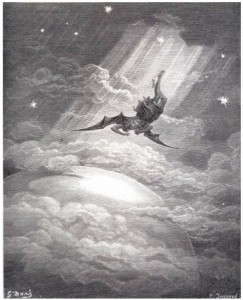 The term “faith” is often maligned. Mark Twain is famous for saying, “Faith is believing what you know ain’t so.” In a similar vein, the atheist evangelist, Richard Dawkins, argues that faith is merely “belief without evidence” or even a process of intentional non-thinking.[1] I find this to be disingenuous. I argue that biblical faith is more akin to an earned trust like that between a husband and wife. I have faith based on an earned trust in my spouses’ character. According to a theological dictionary it refers both to intellectual belief and to relational trust or commitment.[2] Accordingly, my faith is based on evidence.
The term “faith” is often maligned. Mark Twain is famous for saying, “Faith is believing what you know ain’t so.” In a similar vein, the atheist evangelist, Richard Dawkins, argues that faith is merely “belief without evidence” or even a process of intentional non-thinking.[1] I find this to be disingenuous. I argue that biblical faith is more akin to an earned trust like that between a husband and wife. I have faith based on an earned trust in my spouses’ character. According to a theological dictionary it refers both to intellectual belief and to relational trust or commitment.[2] Accordingly, my faith is based on evidence.
Christians should be cautious about how they represent their faith. The Gospel of John is an evidential argument based on the signs done by Jesus that is designed to produce a faith response (Jn 20:38). The Bible is a proven entity. It has stood the test of time for thousands of years and continues to change lives. It merits trust from its proven historical veracity, fulfilled prophecy and from the transcendent self-authenticating quality of Jesus’ teachings. Accordingly, biblical faith is more akin to earned trust than the blind leap that skeptics argue for. In fact, faith as derived from the Hebrew prophet Habakuk is a cornerstone of New Testament theology.
The famous quote from Habakuk reads, “Behold, his soul is puffed up; it is not upright within him, but the righteous shall live by his faith” (Hab 2:4). It is quoted by Paul in Galatians 3:11, Romans 1:17 and arguably also by Paul in Hebrews 10:38. When read together devotionally, it seems to connect the three books. In fact, Martin Luther used this passage to start the reformation theology of “justification by faith.” It seems that the Catholic Church had become like the errant Galatians in thinking that they must earn their salvation. Luther’s idea coheres nicely with the theme from Galatians that we are not saved by works of the law rather the law becomes our task master. Men like to take credit for their accomplishments which is why the Gospel is so counterintuitive. But we cannot justify ourselves, God does it for us by his grace. For me, that distinguishes Christianity from manmade religions. Men would never make it up since they couldn’t somehow take credit. The central message of Galatians is “a person is not justified by works of the law but through faith in Jesus Christ” (2:16). In light of the modern propensity to obfuscate faith, I think one could render that “through trust in Jesus Christ” just as correctly.
[1] Richard Dawkins, “Is Science a Religion?” American Humanist Association. http://www.thehumanist.org/humanist/articles/dawkins.html (accessed June, 19, 2011).
[2]Stanley Grenz, David Guretzki and Cherith Fee Nordling, Pocket Dictionary of Theological Terms (Downers Grove, Ill.: InterVarsity Press, 1999), 50.










